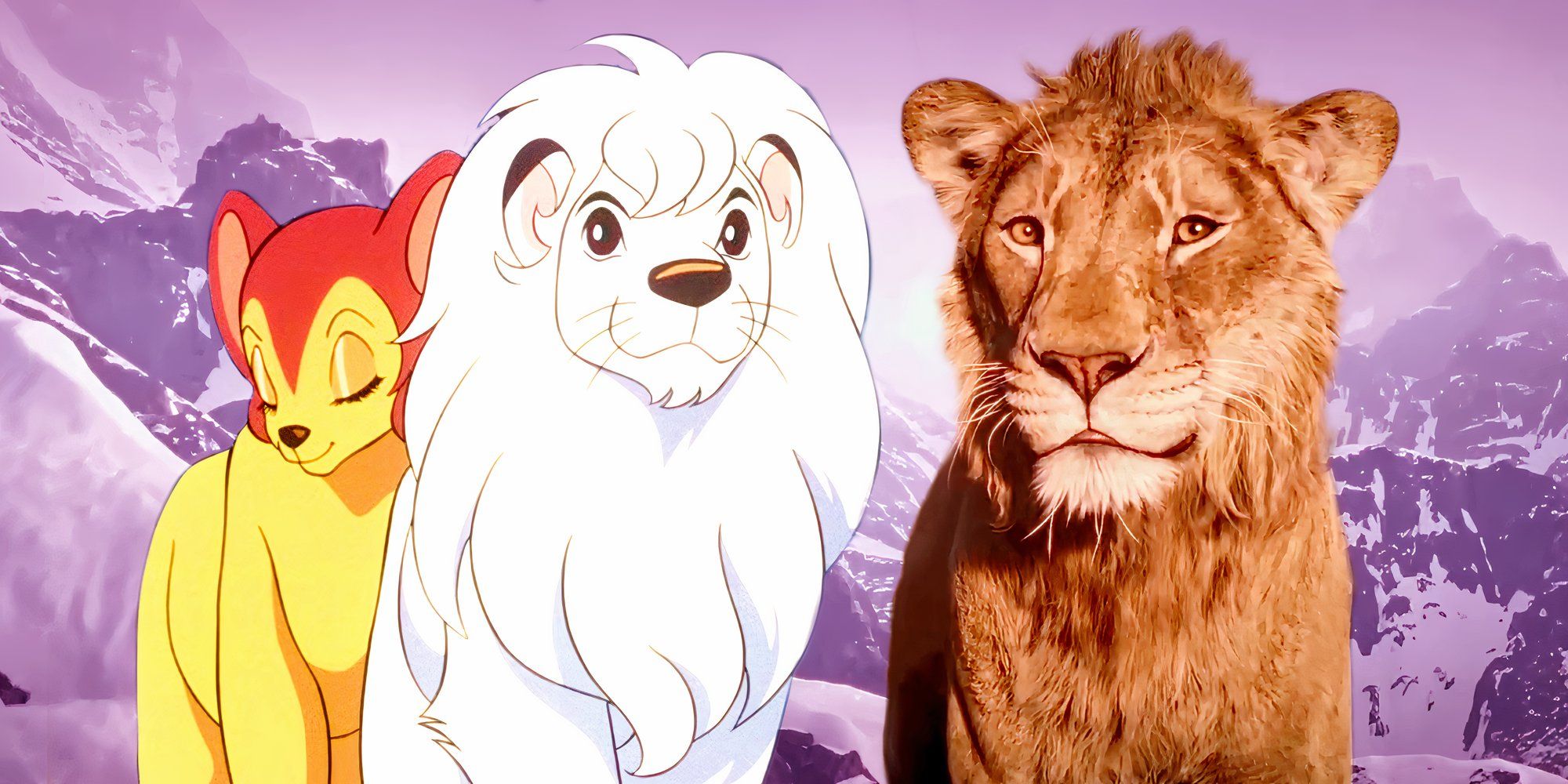Warning: This post contains spoilers for Mufasa: The Lion King.Mufasa: The Lion King‘s villain stands out as a reminder of a long-standing controversy regarding the classic 1994 movie. Though the Disney prequel was largely considered an unnecessary addition to the franchise, Mufasa: The Lion King‘s reviews highlight its enhanced animation, affecting soundtrack, and, most importantly, a clever story that changes The Lion King canon in the best way. Like Simba’s Pride, Mufasa’s origin story builds Kiara’s family tree and expands on their generational history, this time, focusing on the troubling relationship between Mufasa (Aaron Pierre) and Taka (Kelvin Harrison Jr.) — later, Scar.
However, the movie’s main villain is not Scar but a merciless outsider who seeks to kill all lion kings to gain sole power over all creatures. Notably, in Mufasa: The Lion King‘s ending, Simba’s father fights Kiros (Mads Mikkelsen) and earns the title of king of the Pride Lands, having defended and saved the animals of Milele against the vicious tyrant. Since the trailer introduced the all-white pack of violent Outsiders, Kiros has been a topic of debate, as the Mufasa: The Lion King villain’s design recalls the protagonist of Osamu Tezuka’s popular anime.
The Lion King’s Kimba Controversy Explained
The Arguments Comparing The Lion King To Kimba Have Been Debunked
The Lion King came out #1 at the 1994 box office and cemented the studio’s esteemed reputation as a producer of fresh animated stories. However, theories regarding its similarities to Osamu Tezuka’s Kimba the White Lion challenge The Lion King‘s pride as Disney’s first original movie. Though Tezuka died in 1989, his devoted fans have taken it upon themselves to expose Disney for copying the Japanese author, giving way to a now 31-year-old controversy.
Kimba the White Lion, based on Osamu Tezuka’s eponymous manga, was Japan’s first color-animated TV series and ran from 1965 to 1967.
Artist Machiko Satonaka even penned an open letter to Disney, requesting they acknowledge taking inspiration from Tezuka (via The Hollywood Reporter). These claims have since been debunked, as arguments were based on Kimba visuals that either came out after The Lion King or were not correctly contextualized within their source material. For example, even if both Kimba and Simba befriend some of the same animals, the characters are strikingly different, not to mention Tezuko’s protagonist meets a wide variety of animals and even humans.
In speaking with several outlets upon the movie’s release, The Lion King creators claimed to have never heard of Tezuko’s work or seen Kimba the White Lion before.
Some also observed that Simba, like Kimba, seeks to dethrone a black-haired usurper with a scar on his left eye, has a romantic interest in a lioness from his childhood, and talks to his dead father whose face appears in the sky. Even if these do sound more than coincidental, they become minor beats against Kimba the White Lion‘s extensive and unique narrative and end up being representative of common story tropes. Additionally, the likeness of their names was explained to be a translation coincidence as, in Japan, Kimba is known as Leo, while Simba means lion in Swahili.
Mufasa’s Villain Kiros Is Visually Similar To Kimba
Kimba & Kiros Are Completely Different Characters
Mufasa‘s Kiros is similar to Kimba, if anything, because they’re both white lions featured in popular stories. Yet Kiros’ color is the only resemblance he has to Tezuko’s character. While Kimba is a heroic figure with traits such as courage, kindness, and solidarity, Kiros is a ruthless oppressor who would never befriend other animals, let alone those he considers prey. The songs in Mufasa explain that white lions were banished by their prides and came together to take revenge on yellow-furred kings and claim a place in the circle of life.

Related
How Scar Got His Scar In The Lion King & What It Means
Scar is an iconic Disney villain who now has a new origin story that reveals how he got his scar and his name in Mufasa: The Lion King.
The marginalized status of white lions in Mufasa: The Lion King is the opposite in Kimba, as the protagonist is told his color makes him superior. Disney animators may have taken some slight character design inspiration from Kimba the White Lion for the 1994 movie, but its connections to The Lion King prequel are close to none, and the controversy seems long buried.
Source: The Hollywood Reporter
In the latest remake of The Lion King, Mufasa’s villain, Scar, is a direct reminder of a controversial debate that has surrounded the iconic Disney film for years.
The debate revolves around the portrayal of Scar as a villain and whether he is truly evil or simply misunderstood. Some fans argue that Scar’s actions were a result of feeling neglected and overshadowed by his brother Mufasa, while others believe he is inherently evil and power-hungry.
Regardless of where you stand on the debate, it’s clear that Scar’s character adds complexity and depth to The Lion King. His cunning and manipulative nature make him a formidable foe for Simba and adds a layer of tension to the story.
What do you think? Is Scar a misunderstood villain or just plain evil? Let us know in the comments below.
Tags:
- Mufasa’s Villain
- Lion King Debate
- Scar vs Mufasa
- Villains in Lion King
- Controversial Lion King Characters
- Lion King Villain Analysis
- Mufasa vs Scar Conflict
- Lion King Movie Debate
- Disney Villains in Lion King
- Mufasa’s Legacy in Lion King
#Mufasas #Villain #Direct #Reminder #Controversial #Lion #King #Debate



Leave a Reply